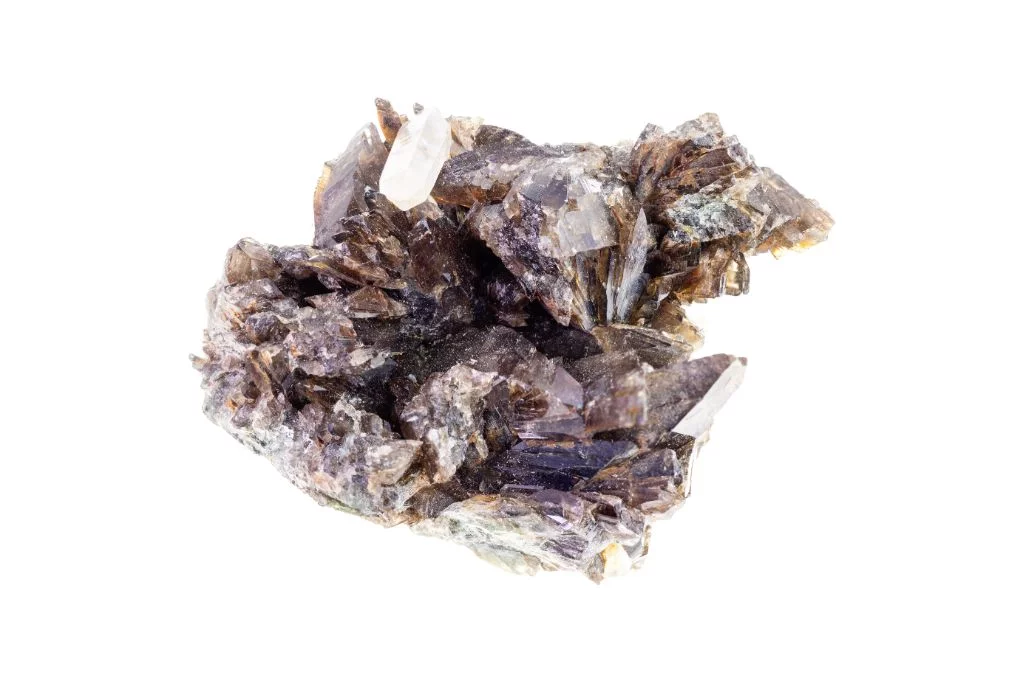Color and Appearance of Axinite
Axinite is a striking mineral that displays a range of colors, typically appearing in shades of brown, violet-brown, or reddish-brown. Some specimens may exhibit a pleochroic effect, showing different colors when viewed from various angles. This unique optical property adds to the allure of axinite crystals, making them particularly captivating to collectors and enthusiasts alike.
Crystal Structure and Form
The crystal structure of axinite is triclinic, resulting in complex and intriguing formations. It often crystallizes in flattened, wedge-shaped crystals with sharp edges. These distinct shapes are a hallmark of axinite, setting it apart from other minerals. The crystals can form individually or in groups, sometimes creating stunning cluster formations that showcase the mineral’s unique geometry.
Physical Characteristics
Axinite boasts a vitreous to resinous luster, giving it a glass-like or slightly waxy appearance when polished. Its hardness ranges from 6.5 to 7 on the Mohs scale, making it relatively durable for use in jewelry. The mineral also exhibits perfect cleavage in one direction, which can result in clean breaks along specific planes when fractured.
Unique Features
One of the most distinctive features of axinite is its occasional transparency, allowing light to pass through the crystal and reveal its internal structure. This quality, combined with its unusual colors and sharp crystal forms, makes axinite a prized specimen among mineral collectors. Some varieties of axinite, such as the pinkish-violet tinzenite, are particularly rare and sought after for their exceptional beauty and scarcity.
Historical and Cultural Significance of Axinite
Axinite, though not as widely known as other gemstones, has a rich history and cultural significance. This complex borosilicate mineral was first discovered in the 18th century and named after its sharp, axe-like crystals. Throughout history, axinite has been prized by collectors and mineralogists for its unique crystal structure and pleochroic properties, which cause it to display different colors when viewed from various angles.
Metaphysical Associations
In the realm of crystal healing and metaphysics, axinite is believed to possess powerful energetic properties. It is often associated with enhancing memory, improving cognitive function, and stimulating creativity. Many practitioners claim that axinite can help balance the mind and body, promoting a sense of inner peace and harmony. Additionally, it is thought to facilitate communication between the physical and spiritual realms, making it a valuable tool for meditation and spiritual growth.
Common Uses and Benefits
Axinite finds applications in both traditional and modern contexts. Traditionally, it has been used in jewelry making, though its relative softness limits its use in everyday wear. In modern times, axinite is primarily sought after by mineral collectors and metaphysical practitioners. Crystal healers often recommend axinite for those seeking to overcome mental blocks, enhance problem-solving abilities, and boost self-confidence. It is also believed to aid in the detoxification of the body and promote overall physical well-being.
Traditional and Modern Applications
In traditional medicine systems, axinite has been used to address issues related to the nervous system and brain function. Modern alternative healing practices incorporate axinite in energy healing sessions, often placing it on the third eye or crown chakra to enhance intuition and spiritual awareness. Some people carry axinite as a pocket stone or wear it as jewelry to benefit from its alleged energetic properties throughout the day. In scientific and industrial applications, axinite’s unique optical properties make it valuable for research in mineralogy and materials science.

